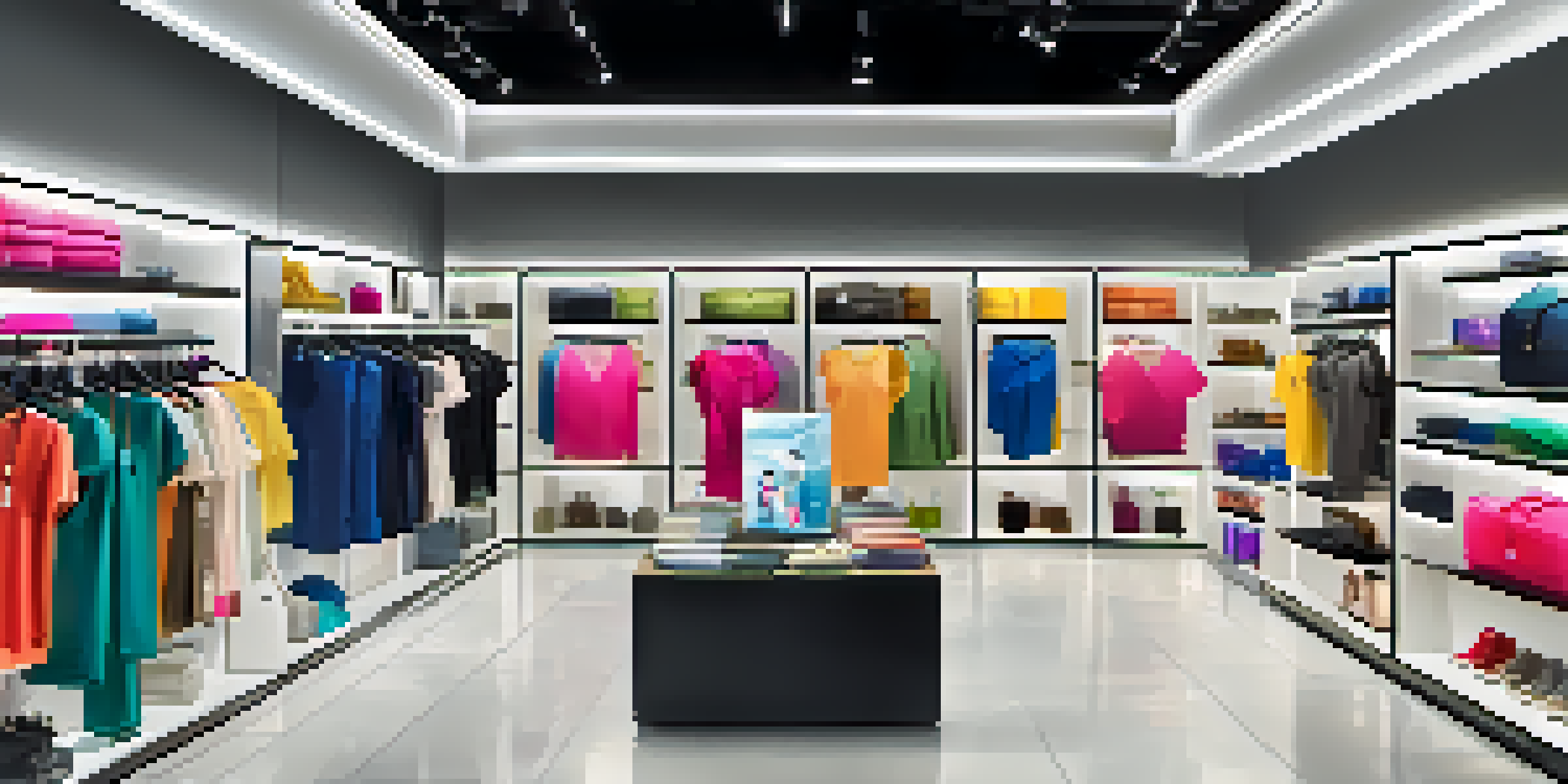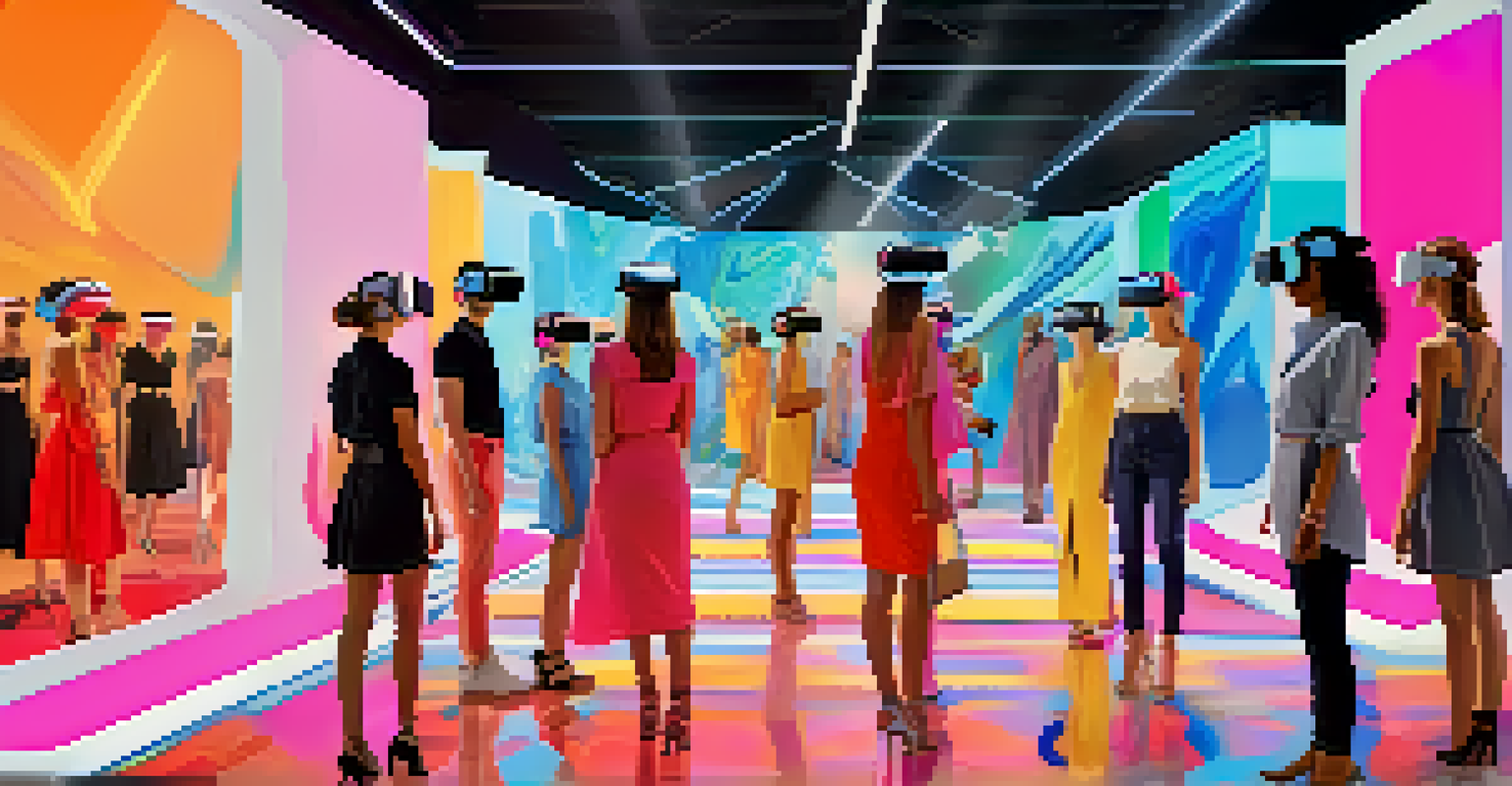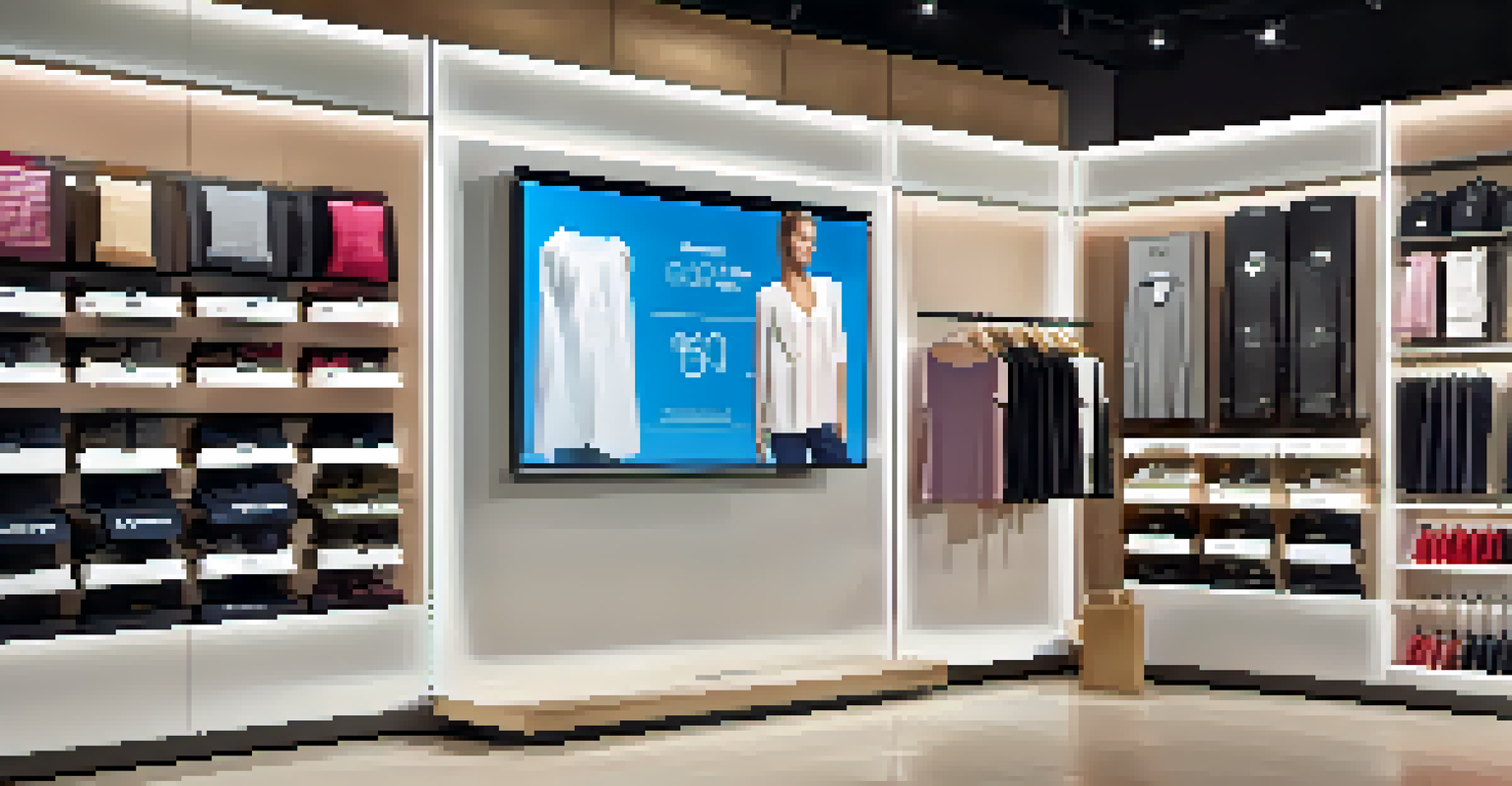Digital Visual Merchandising: Merging Tech with Fashion Retail

Understanding Digital Visual Merchandising in Retail
Digital visual merchandising blends technology with traditional retail strategies. By leveraging digital tools, retailers can create immersive shopping experiences that engage customers beyond the physical store. This approach not only enhances product visibility but also encourages interaction, making shopping more enjoyable.
The future of retail is not just about selling products; it's about creating experiences that foster connections between consumers and brands.
Imagine walking into a store where digital screens showcase products in action or allow you to see different color options on a dress with just a swipe. This is the essence of digital visual merchandising—using tech to bridge the gap between online and offline shopping. It transforms static displays into dynamic experiences that can capture a shopper's attention instantly.
As consumers increasingly gravitate towards online shopping, retailers are compelled to innovate how they display products. Digital visual merchandising offers a solution, allowing brands to present their merchandise in a captivating way, elevating the overall customer experience, and driving conversions.
The Role of Augmented Reality in Fashion Retail
Augmented Reality (AR) is revolutionizing how customers interact with fashion items. By overlaying digital images onto the real world, AR allows shoppers to visualize products in their own space or try on clothes virtually. This interactive element reduces uncertainty, making it easier for consumers to make informed purchases.

For instance, imagine using your smartphone to see how a pair of shoes would look on your feet without ever trying them on. Brands like Nike and Sephora have successfully implemented AR, creating memorable experiences that keep customers engaged and returning for more. This technology not only enhances the shopping experience but also builds brand loyalty.
Digital Merchandising Enhances Retail
Digital visual merchandising combines technology and retail strategies to create immersive shopping experiences that engage customers.
Moreover, AR helps in reducing return rates—a common issue in online shopping. When customers can see how a product looks on them before buying, they are less likely to return it, which ultimately benefits retailers by improving their bottom line.
Leveraging Virtual Reality for Fashion Experiences
Virtual Reality (VR) takes digital visual merchandising a step further by immersing customers in completely virtual environments. Imagine walking through a digital replica of a store from the comfort of your home or attending a virtual fashion show showcasing the latest trends. VR opens up a world of possibilities for fashion retailers.
In a digital world, the shopping experience is not just about the products; it's about how those products make the consumer feel.
Brands like Balenciaga have experimented with VR to create unique shopping experiences that can draw in tech-savvy consumers. This technology not only captivates an audience but also allows retailers to showcase their collections in a more engaging manner, breaking the limitations of physical stores.
By offering these immersive experiences, retailers can create emotional connections with their customers. This not only enhances brand perception but also encourages repeat visits and purchases, as shoppers feel more connected to the products and the brand itself.
Personalization: Tailoring the Shopping Experience
Personalization is a crucial aspect of digital visual merchandising, as it allows retailers to cater to individual customer preferences. By utilizing data analytics and AI, brands can offer personalized recommendations, ensuring that customers see products tailored to their tastes. This level of customization can significantly boost customer satisfaction.
For example, think of how a website suggests clothing based on your previous purchases or browsing history. This not only saves time for the shopper but also increases the chances of conversion. Retailers like Zara and ASOS are already harnessing the power of personalization to enhance their online platforms.
AR and VR Transform Shopping
Augmented Reality and Virtual Reality provide interactive experiences that help consumers visualize products, reducing uncertainty and enhancing brand loyalty.
Moreover, personalized experiences extend to digital displays in physical stores, where screens can showcase relevant products based on customer behavior. This seamless integration of data and technology creates a more engaging shopping experience, making customers feel valued.
The Impact of Social Media on Fashion Merchandising
Social media has become a vital tool in digital visual merchandising, allowing brands to showcase their products to a wider audience. Platforms like Instagram and TikTok are not just for social interaction; they serve as powerful marketing channels where visual content can drive traffic to online stores. The emphasis on visual storytelling resonates well with fashion brands.
Consider how influencer marketing has changed the landscape of fashion retail. When a popular influencer shares their latest outfit on Instagram, not only does it spark interest, but it also encourages followers to check out the featured brands. This organic promotion through social media can significantly impact a brand's visibility and sales.
Additionally, social media allows for real-time feedback from consumers. Brands can quickly gauge reactions to new collections, adjust their strategies, and create tailored marketing campaigns that resonate with their target audience, resulting in more effective visual merchandising.
Sustainability: The Future of Fashion Retail
As the fashion industry faces increasing scrutiny over its environmental impact, sustainability has become a focal point in digital visual merchandising. Brands are exploring innovative ways to showcase their commitment to eco-friendly practices, whether through sustainable materials or responsible sourcing. This shift not only appeals to conscious consumers but also aligns with prevailing market trends.
For instance, digital displays can highlight a brand's sustainable practices, educating customers on the lifecycle of their products. By incorporating storytelling elements that emphasize sustainability, retailers can create a stronger connection with their audience and differentiate themselves in a crowded marketplace.
Personalization Boosts Customer Satisfaction
Utilizing data analytics for personalized recommendations ensures customers see products that align with their preferences, significantly increasing conversion rates.
Moreover, consumers are increasingly prioritizing brands that align with their values. By effectively communicating their sustainability efforts through digital visual merchandising, retailers can build trust and loyalty with eco-conscious shoppers, ensuring long-term success in the evolving fashion landscape.
The Future of Digital Visual Merchandising
Looking ahead, the future of digital visual merchandising is poised for continued evolution as technology advances. With the integration of AI, machine learning, and big data, retailers will gain even deeper insights into consumer behavior, allowing for hyper-targeted marketing strategies. This will lead to more personalized and engaging shopping experiences.
Imagine a future where your shopping experience is so tailored that it feels like the store knows you personally. From virtual fitting rooms to interactive displays that adapt based on your preferences, the possibilities are exciting. As consumers become more accustomed to these technologies, brands will need to innovate constantly to stay relevant.

Ultimately, the blending of technology and fashion retail will continue to shape how consumers shop. By embracing digital visual merchandising, brands can not only enhance their visibility but also create memorable experiences that resonate with shoppers, fostering loyalty and driving sales.